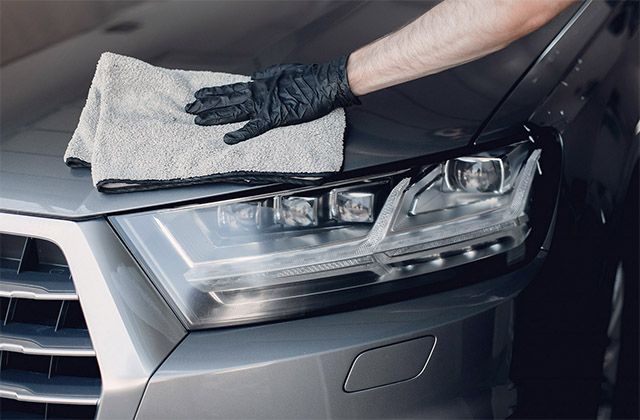What Kind of Content Should I Use to Get More Social Media Followers?
Introduction
Social media marketing is a great way to get the word out about your business. You can easily reach people who are interested in your brand and products, but you have to make sure that they’re seeing good content if you want them to follow you on social media channels. If you are someone that you want to get results faster and more value for your money then you need a social media management agency.
Don’t be afraid to create evergreen content
Evergreen content, or timeless content, is a very useful tool for marketers. Evergreen content refers to any piece of written material that can be used in any season and at any time of year. This can include blog posts, guides, infographics and more.
Although evergreen content is meant to be used all year long (hence its name), it’s especially helpful during the holiday season when you’re trying to get your audience excited about what you have going on before Black Friday and Cyber Monday. It can also help build trust with your audience so that they’ll keep coming back even when there isn’t anything new on your site right now.
Create videos that inform or entertain your fans
Videos are one of the most powerful tools you can use on social media. According to a 2018 study by Social Media Examiner, videos on social media have a 94% higher engagement rate than photos or links. Videos can be used to inform and entertain your followers, helping you get your message across in an engaging way that’s hard for people to ignore.
For example, if you run an eCommerce store that sells dog toys, you could create a video showing how many types of dogs play with squeaky toys (this will help customers understand which toys would be best for their dogs). You could also create short clips of dogs enjoying playtime with their new toys! These short clips are much more manageable than trying to make one long video about everything your company does—and they’re just as effective at getting the message across while being easier to digest as well.
Use stories to connect with your audience
You can connect with your audience in a meaningful way by using stories.
- Share information: If you want to share the latest news about your company, consider including a story. This will help your followers feel more connected to what’s happening within the organization, which is especially important for larger brands that do not have physical locations where customers can visit them (i.e., banks and airlines).
- Build trust: A story could also be used to build trust between you and your followers by demonstrating how much thought has gone into creating it. For example, if you’re planning an event for next month and need help finding entertainment options for children at the venue where it will take place, tell people about that process on social media—and attach some photos or videos of what you end up choosing! This kind of transparency helps show off both your expertise as well as humanity; even though there are plenty of businesses out there who claim they care about their customers’ needs but don’t actually act upon those claims in any tangible way whatsoever…
Consistently post about topics that matter the most to you
- Consistency is the key. You need to post consistently—and not just on one day of the week, but every day. If you want to build your brand, you’ll need to put in the effort.
- Be yourself! Don’t be afraid of posting about topics that matter most to you or are relevant to your audience. There is no one right way to do social media; it’s all about finding what works best for you and sticking with it.
Create contests and giveaways that appeal to your ideal clients
- Create contests and giveaways that appeal to your ideal clients.
- Run a contest around a product or service you offer and offer it as a prize.
- Offer freebies, like a free consultation or basic package of your services with any new client who books an appointment with you using the contest link.
- Encourage people to share their best stories about how they used your product or service by giving away something small in exchange for each story shared on social media.
Learn how to run successful ads on social media channels
- Know your audience.
- Know your goals.
- Know your budget.
- Know your conversion rate.
- Understand the available ad formats, networks and channels for each social media platform (for example, Facebook offers ads in the News Feed, Messenger and Instagram).
- Make sure you’re using relevant ad extensions for each social media platform to enhance the impact of your ads’ performance (for example, Facebook enables carousel ads to include up to 10 images or videos in an ad).
Use social media for customer service and feedback
You can use social media to better connect with customers and get feedback from them, which will help you resolve issues faster. Social media is a great tool for communicating directly with the people who matter most: your customers. It’s also one of the best ways to get direct input on how you can improve your product or service so that it meets their needs better than ever before.
This kind of interaction is especially important in today’s world where there seems to be an app dedicated to almost every task imaginable (and some we could’ve never imagined). With so many options available, it’s easy for consumers to choose where they spend their money—so make sure yours is still top-of-mind when they do!
A few things I’ve noticed about my followers when it comes down to what kinds of content they seem interested in: -They love learning new things (especially if those things are related) -They love feeling like they’re part of something bigger -They love hearing success stories
Tailor your content for each platform
The same message can’t be sent using the same strategy on every platform. You need to tailor your content for each platform.
- Images: The image you use on Pinterest should be different from the one you use on Instagram and Facebook. On Pinterest, images should typically be bigger and more eye-catching than other social media sites because users are looking at their feeds casually and aren’t usually scrolling through them quickly like they would if it were a newsfeed. In addition to having different images for each platform, it’s also important that they are high resolution so they look crisp when someone presses “view full size” or clicks into an article from your pin description page.
- Language: Your language should vary depending on what type of audience is reading it (i.e., older vs younger generations) as well as how comfortable/confident they feel about expressing themselves online (i.e., whether they’re cautious or outspoken). The best way to determine which type of text is right for you? Ask yourself what kind of person would find this interesting or helpful?
You can always be creating more great content
As a content creator, you need to always be creating more great content. You can never stop learning and growing as a writer. Whether you’re an established writer or just starting out, there is always something new to learn about the craft of writing and its importance in social media marketing.
It’s also important that you create new pieces of content on a regular basis—at least once per week (or even better, once per day). This will help keep your audience engaged with your brand and help them see that your business is constantly improving itself through new ideas and products/services offered.
Conclusion
There is no one type of content that works for everyone, but the takeaway here is that you need to have a diverse portfolio of different types of content. You should always be creating more great stuff and posting it so that your audience has something new every time they come back to your page. This way, they’ll never get bored with what’s on offer. Click here to check the outline of our social media content.

